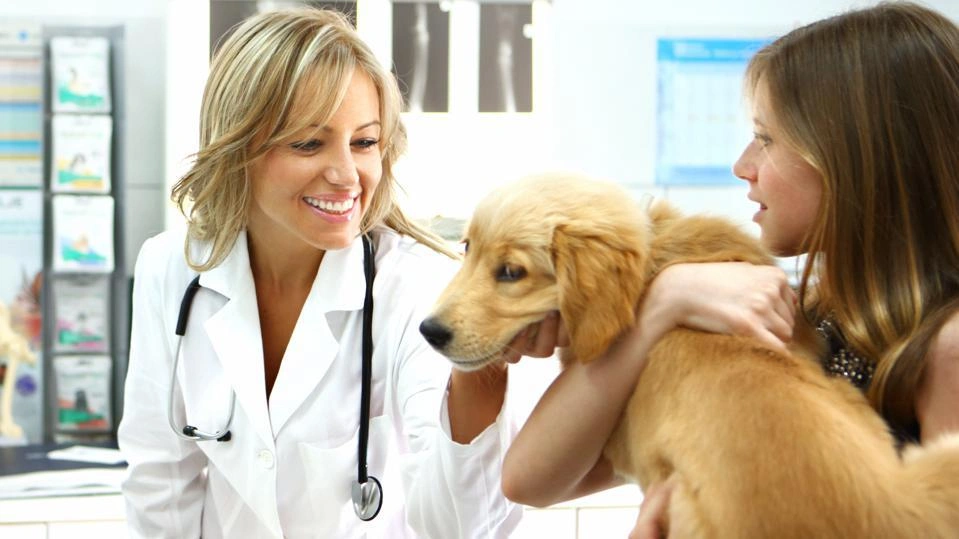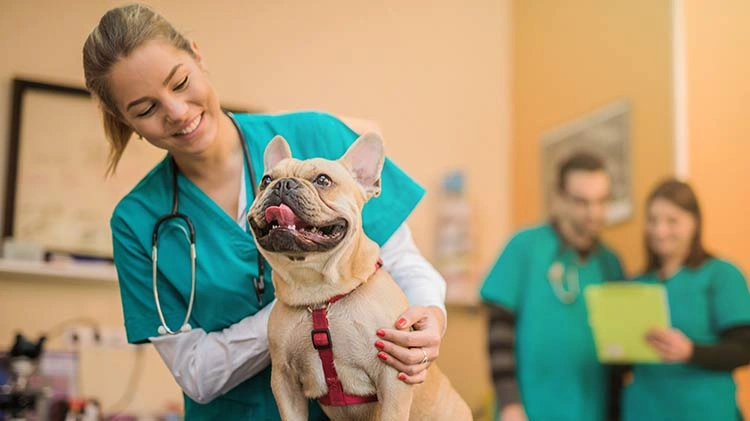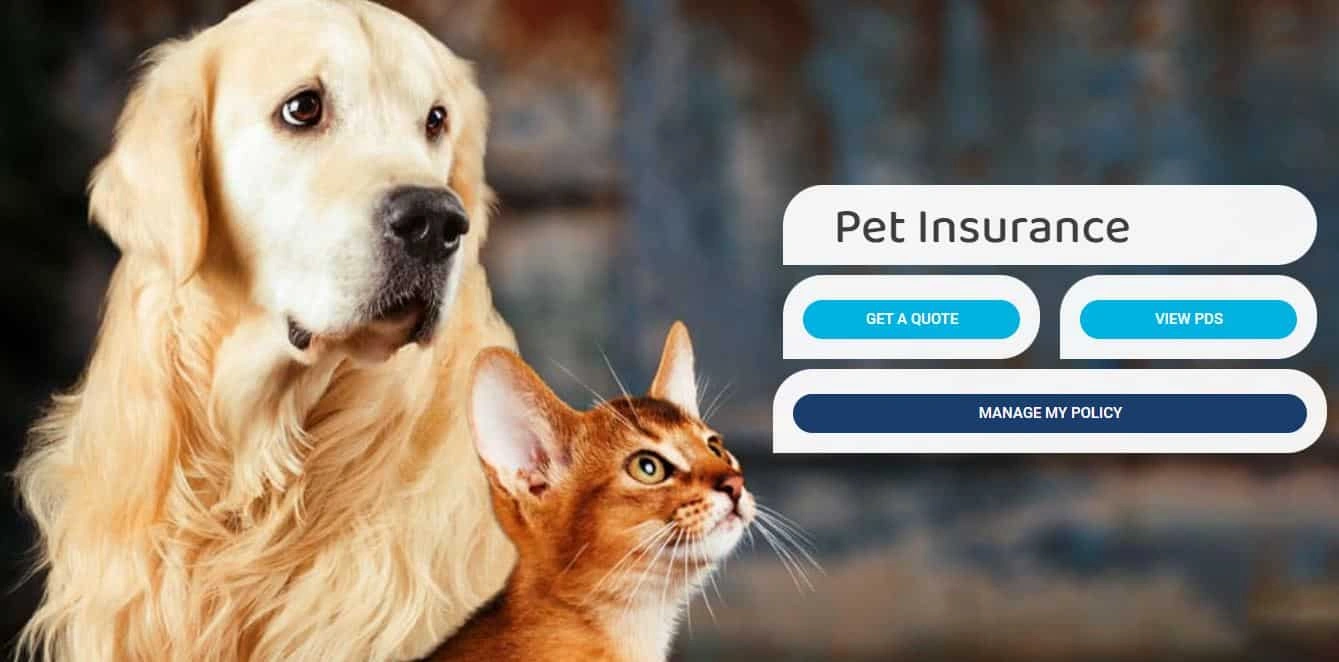Pet insurance coverage helps cover the cost of veterinary care when your pet faces accidents, injuries, or illnesses. Most plans reimburse a percentage of eligible medical bills after you’ve paid your monthly premium and deductible. Typical coverage includes treatments for accidental injuries like cuts or broken bones, illnesses such as infections or cancer, and, in some cases, routine care like vaccinations.
Many policies also offer extra benefits, such as coverage for surgeries, hospital stays, third-party liability, or even overseas vet bills and holiday cancellation if your pet gets sick while you’re away. However, every provider is different. Some plans focus only on accidents or critical illnesses, while others offer broader, more comprehensive protection up to a certain benefit limit. That’s why it’s important to carefully review the policy details so you know exactly what’s included and what isn’t before you need to use it.

Pet insurance reimburses you for a percentage of veterinary expenses relating to your pet’s illness or injury, depending on your coverage, and requires you to pay a monthly premium.
Most insurers only cover cats and dogs, and some have breed and age restrictions for enrollment. Overall, while pet insurance isn’t required, it provides peace of mind to owners in case their pet needs expensive treatment or even just routine care.
Types of Pet Insurance Coverage

- Accident-and-Illness: Accident-and-illness plans cover treatment for accidents and various illnesses, including infections, chronic conditions, cancer, arthritis, diabetes, allergies, and hereditary diseases.
- Accident-Only: Accident-only plans cover injuries sustained in accidents, ranging from cuts and broken bones to the ingestion of foreign objects.
- Wellness: Wellness plans reimburse owners for routine and preventative care. These are usually add-on options to other plans, but are occasionally offered as a standalone policy. Such plans may cover immunizations, dental cleanings, annual exams, and flea and tick treatments. Some plans even reimburse you for spay and neuter surgeries.
Accident and Illness Coverage
The most common type of pet insurance plan covers accidents and illnesses. So if your dog is hit by a car or gets a urinary tract infection, your plan would cover their treatment, up to your coverage limit. Below are some of the scenarios that an accident and illness plan could cover.
| Accidents | Illnesses |
| Animal bites. | Allergies. |
| Bee stings. | Arthritis. |
| Broken bones. | Cancer. |
| Car accidents. | Diabetes. |
| Cuts or lacerations. | Ear infections. |
| Eye injuries. | Heart disease. |
| Fractured teeth. | Kidney disease. |
| Poisoning. | Skin conditions. |
| Ruptured ligaments. | Thyroid disorders. |
| Swallowing a foreign object. | Urinary tract infections. |
| Torn nails. | Vomiting and/or diarrhea. |
Note that accident and illness plans cover only things that go wrong with your pet’s health. They won’t reimburse you for preventive care like annual checkups and vaccinations unless you buy a wellness add-on (more on that below).
Why choose this type of coverage: Accident and illness plans cover the broadest range of problems that your pet could have. They’re also the most customizable and widely available, which means you’ll have plenty of options to find the coverage you need.
Accident-Only Coverage
Accident-only plans are more limited than accident and illness plans. They’ll pay to treat accidental injuries like the ones listed above, but won’t cover expenses due to cancer, infections, or other illnesses. They tend to be cheaper than accident and illness plans because they cover so much less.
Not all pet insurers sell accident-only plans.
Why choose this type of coverage: In some cases, accident-only plans may be the only option for pets who are too old at the time of enrollment to qualify for an accident and illness policy. An accident-only plan may also be a good choice if you can’t afford accident and illness coverage, but you still want some emergency insurance for your pet.
Wellness Plans
Wellness or preventive care plans are typically sold as add-ons to an accident and illness policy (or, less commonly, an accident-only policy). They often offer a set list of routine services for which they’ll reimburse you, along with an annual limit for each.
Depending on the plan, those services might include:
-
Wellness exams.
-
Vaccinations.
-
Bloodwork.
-
Heartworm or FeLV/FIV test.
-
Fecal or internal parasite test.
-
Flea, tick, and/or heartworm medication.
-
Microchipping.
-
Deworming.
-
Dental cleaning.
-
Spay or neuter surgery.
Why choose this type of coverage: A wellness plan may save you money if you know you’ll need all or most of the services it covers. Otherwise, you may end up paying more for the coverage than you get back in reimbursements. Do the math before you commit.

For your pet insurance policy, you’ll pay a monthly premium. Then, if your pet visits the vet, your pet insurance will cover some of the cost. Remember that most pet insurance requires you to pay the veterinarian and submit a claim for reimbursement afterward. However, some insurers will pay the veterinarian directly, and the only out-of-pocket cost you’ll be responsible for is the percentage not covered by your insurer.
Your pet insurance coverage and cost are determined by the deductible, reimbursement rate, and annual limit you choose. Understanding your options is crucial because you may not be able to change your choices until your renewal period.
Deductibles
Your pet insurance deductible is the amount you must pay out-of-pocket before coverage begins. There are annual and per-incident deductibles. An annual deductible requires you to meet the deductible within the year before reimbursement, while a per-incident deductible requires you to pay a deductible for each vet visit. Your policy will state the amount.
For example, if your annual deductible is $500 and you submit your first claim of the year for $600, insurance will reimburse you up to $100, depending on your reimbursement rate. Then, when you submit your next covered claim, for example, $300, your policy will cover your reimbursement percentage of the full $300 because you’ve already met your deductible for the year.
Reimbursement Rates
The reimbursement rate is the percentage your insurer pays for your pet’s covered medical expenses after meeting your deductible. You can typically choose a set rate between 70% and 90%. Remember, however, that the higher your reimbursement rate is, the higher your premium will be.
To continue with the above example: Say you’ve already met your $500 annual deductible, and you’ve now submitted a claim for $300. If your reimbursement rate is 70%, your insurer will pay $210, and you’ll only have to cover the remaining $90.
Annual Coverage Limits
An annual coverage limit is the total amount your insurer will reimburse you for your pet’s covered veterinary costs in a given policy year. You’ll be responsible for all expenses after your pet meets your insurer’s annual coverage limit. Annual coverage limits vary by insurer and policy; they can be as low as a few thousand dollars to, in some cases, unlimited.
Note that if you don’t meet your annual coverage limit during the policy year, it won’t roll over to the next. Also, your premium will be more expensive if you choose a higher annual coverage limit.
Claims Process
Filing a claim to get reimbursed is fairly straightforward, but the process varies by insurer. It can take up to a month, depending on the type of claim, your policy, and your insurer. Always consult your specific provider, but you’ll typically follow these steps:
1. After your pet is treated by a licensed veterinarian, pay the bill and get an itemized receipt.
2. Submit a claim form – usually found on your provider’s website – and your receipt to your insurer.
3. After review, if your claim is approved, your insurer will pay you for your reimbursement rate via direct deposit or mailed check if your deductible has been met.

According to NAPHIA, the average monthly premiums for an accident-and-illness policy in 2024 were $62.44 for dogs and $32.21 for cats. While these premiums give you an idea of the price, the cost of pet insurance can vary greatly depending on your insurer, pet, and selected coverage.
Pet insurance pricing can feel confusing at first glance. Premiums vary widely based on multiple factors, and understanding how costs are calculated will help you choose a plan that fits your budget without sacrificing coverage.
Factors Affecting Premiums
Several elements determine how much you’ll pay each month:
-
Pet’s Age – Younger pets cost less to insure. Premiums rise as pets age since older animals are more likely to develop health issues.
-
Breed – Certain breeds are prone to hereditary conditions. For example, bulldogs and German shepherds often cost more to insure than mixed-breed dogs.
-
Location – Vet costs differ by region. Living in a large city with high veterinary expenses will usually increase your premium compared to rural areas.
-
Coverage Level – Accident-only plans are cheaper, while comprehensive plans cost more but provide greater protection.
-
Reimbursement Rate and Deductible – Choosing higher reimbursement rates (like 90%) and lower deductibles increases premiums, while lower reimbursement rates and higher deductibles reduce them.
Average Cost by Pet Type
On average, dog insurance is more expensive than cat insurance due to higher vet costs for canines.
-
Dogs: $35–$70 per month (accident and illness coverage)
-
Cats: $20–$40 per month (accident and illness coverage)
-
Accident-only plans: $10–$20 per month for both dogs and cats
For example, if your vet bill is $2,000, your deductible is $500, and your reimbursement rate is 80%, you would pay $900 out of pocket ($500 deductible + $400 co-pay), and insurance would cover the remaining $1,100.
Exotic pets, such as rabbits, reptiles, and birds, may also be eligible for insurance through specialized providers, though premiums vary significantly.
Deductibles, Reimbursements, and Co-Pays
Pet insurance operates on a cost-sharing system:
-
Deductible – The amount you pay out-of-pocket before coverage kicks in. This can be annual (paid once per year) or per-incident (paid for each new condition).
-
Reimbursement Rate – The percentage of eligible expenses the insurer pays after the deductible is met (commonly 70%, 80%, or 90%).
-
Co-pay – The remaining percentage you’re responsible for after reimbursement.
What factors affect pet insurance premiums?
- Coverage: Generally, an accident-only plan is the cheapest option, while having accident-and-illness coverage or an add-on wellness plan will increase costs.
- Location: Some areas – typically major cities – will have higher veterinary costs, making insurance more expensive as a result.
- Pet Species and Breed: The cost to insure cats, dogs, and exotic animals differs, and some breeds are more expensive because they’re predisposed to costly medical conditions.
- Pet Size: Larger animals usually cost more to insure.
- Pet Age: Senior pets are more likely to have preexisting conditions and develop illnesses and conditions, so insurance companies charge more. Some insurers won’t insure pets over a certain age.
- Deductible: On average, the higher your deductible is, the lower your premium will be.
- Reimbursement Rate and Annual Coverage Limit: Typically, the higher your reimbursement rate and annual coverage limit, the more expensive your premium will be.
How Do I Get Pet Insurance?

You can quote pet insurance from a variety of insurance companies. To quote, you’ll need to provide a few details about your pet, such as their name, pet type (dog or cat), age, breed, and gender. You’ll also need to provide some basic information about yourself, including your name and address.
Most pet insurers will not cover pre-existing conditions. These are medical conditions your pet had before your policy’s start date. Some insurers may have a waiting period before your coverage begins. The length of the waiting period varies by state, insurer, and coverage type, but may be a few weeks for illness coverage; for accident coverage, it’s usually a few days.
What is Not Covered by Pet Insurance?

While pet insurance can feel like a lifesaver, it’s important to understand that no policy covers absolutely everything. Insurance companies set exclusions to keep premiums affordable and to prevent people from signing up only after their pet gets sick. Knowing these exclusions helps you avoid unpleasant surprises when filing a claim.
Pre-Existing Conditions
Almost all pet insurance providers exclude pre-existing conditions. These are illnesses or injuries that showed symptoms before coverage began or during the waiting period. For example, if your dog was diagnosed with arthritis before you enrolled, treatments for that condition won’t be reimbursed.
Some insurers do make exceptions for curable pre-existing conditions. For instance, if your cat had a urinary tract infection before coverage but went a full year symptom-free, the provider may cover future infections. However, chronic conditions like cancer or hip dysplasia usually remain excluded.
Cosmetic Procedures
Insurance is designed for medical necessity, not aesthetics. Elective surgeries like ear cropping, tail docking, and declawing are not covered. Similarly, cosmetic dental work won’t be reimbursed, though medically necessary extractions or cleanings under anesthesia may be included in certain plans.
Breeding and Pregnancy Costs
If you’re breeding your pet or planning for pregnancy-related care, you’ll likely have to cover those costs out of pocket. Most policies exclude fertility treatments, C-sections, and postnatal care. A few specialized plans may offer limited coverage, but these are rare and usually come at a high cost.
Behavioral Training and Therapy
Insurance doesn’t typically cover training sessions or behavioral consultations, even if they’re recommended by a vet. For example, if your dog struggles with separation anxiety or aggression, the cost of a professional trainer or animal behaviorist won’t be reimbursed. However, some comprehensive policies are starting to include limited behavioral coverage, so it’s worth checking the fine print.
Routine and Preventive Care (Unless Included)
Annual checkups, vaccinations, flea and tick prevention, and dental cleanings are generally excluded unless you purchase an additional wellness plan. These preventive add-ons can help budget routine expenses, but they’re separate from standard accident and illness coverage.
Real-Life Examples of Pet Insurance in Action

Nothing illustrates the value of pet insurance better than real-life stories. Here are a few common scenarios that highlight how coverage can make a difference.
Emergency Accident Cases
Imagine your dog swallows a sock (yes, it happens more often than you’d think). Emergency surgery to remove the blockage can easily cost $3,000–$5,000. With accident-only coverage, most of that expense would be reimbursed. Without insurance, you’d be left scrambling to cover the bill.
Chronic Illness Cases
Consider a cat diagnosed with diabetes. Ongoing insulin treatments, blood tests, and vet visits can add up to thousands of dollars each year. An accident-and-illness plan ensures that much of this recurring expense is covered, making it manageable over your cat’s lifetime.
Cost Savings for Pet Owners
A Labrador with hip dysplasia may require surgery costing $7,000. With 80% reimbursement after a $500 deductible, the owner pays just $1,900 instead of the full bill. That’s a massive financial relief and a life-changing difference for the pet.
These examples prove that insurance isn’t just about numbers; it’s about ensuring pets receive care without delay or compromise, regardless of the cost.
Conclusion
Pet insurance coverage is more than just a financial product; it’s a commitment to your pet’s health and well-being. It gives owners the ability to say “yes” to treatment options without hesitation, ensuring pets live longer, healthier lives.
From accidents to chronic illnesses, insurance acts as a safety net that turns overwhelming vet bills into manageable expenses. While it’s not perfect, exclusions, rising premiums, and upfront payments are real concerns; the benefits often outweigh the drawbacks for families who want the best for their furry companions.
Ultimately, whether you choose insurance, a savings plan, or a mix of both, what matters most is being prepared. Pets bring endless love and joy into our lives; securing their health is one of the best ways we can return the favor.
FAQ
Can I choose my own veterinarian?
You can generally choose any veterinarian as long as they’re licensed and operate in the country where your insurer offers coverage.
Does pet insurance cover any pets besides cats and dogs?
Not typically. You’ll need an insurer that specializes in exotic pets. When it comes to pet insurance, “exotic” can be used to describe any animal that isn’t a cat or dog. Additionally, pet insurance doesn’t cover farm animals.
Does auto insurance cover pets in a car accident?
If you have collision coverage on your Progressive personal auto policy, Pet Injury Protection covers your vet bills up to a specified limit if your pet is injured in a car accident. This coverage is separate from pet insurance, and it can pay up to $1,000 for medical care if your dog or cat gets hurt in a car accident, regardless of fault.
Is pet insurance mandatory?
No, pet insurance is optional, but it can be a smart financial decision for unexpected vet bills.
How soon does coverage begin?
Most plans have waiting periods, usually 2–14 days for accidents and up to 30 days for illnesses.
Can I insure multiple pets under one policy?
Yes, many insurers offer multi-pet discounts, making it cheaper to cover multiple furry friends.
Does pet insurance cover dental work?
It usually covers medically necessary procedures, like extractions, but not routine cleanings unless you have a wellness add-on.
Can I cancel my policy anytime?
Yes, most companies allow cancellation, though refunds may depend on when you cancel and whether claims were filed.





